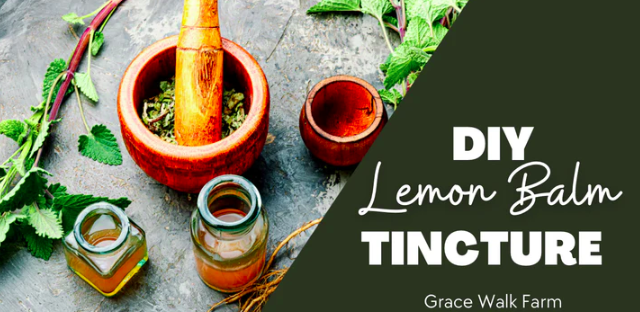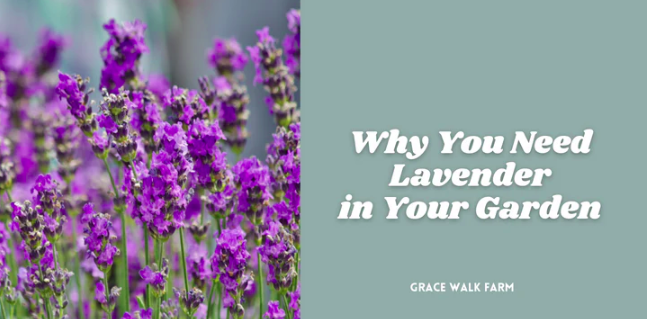Growing medicinal herbs in the home garden can unlock a whole new world of benefits for your mental and physical health. Adding herbs to the home garden is easy and many of them are perennial so you don’t have to replant them year after year.
Welcome to Grace Walk Farm, our family homestead in western NC. We share the highs and lows of our homestead journey, in hopes that it will encourage you to grow your own food too. Click here to grab our Beginner Garden Guide for free! Join our 600K strong Instagram community of homesteaders here. Thanks for stopping by!
Some of the most popular medicinal herbs for home use include:
- Calendula
- Lavender
- Sage
- Chamomile
- Echinacea
- Aloe Vera
- Rosemary
- Peppermint
- Ginger
- Lemon balm
When you first begin learning about herbs, it can be overwhelming. There are so many websites and books about medicinal herbs available today, but in my experience, very few of them are aimed at total beginners. So today, I want to break down some simple herb preparation methods you can use in your home garden to take advantage of the healing properties of herbs … no experience needed!
Method #1 – Brew Your Own Herbal Tea
Making tea is the easiest method to start using your homegrown medicinal herbs. A strong brewed tea can be helpful to treat a variety of health concerns. Peppermint leaves can be used to make a tea that boosts your mood and eases a headache. Lemon balm is an excellent plant to use for tea brewing and it can level out your mood and calm anxiety.
You can make DIY herbal tea with both fresh and dried leaves. If you are using fresh herbs, you’ll need around 3 or 4 large leaves for a cup of tea. Rinse your herbs off gently in cold water and then put them in your mug of choice. Pour hot water on top and let the herbs steep in the water for 5-7 minutes, depending how strong you like your tea.
If you’re working with dried leaves, you will need an infuser or a tea ball. This is the tea ball that I use regularly (bonus – it’s pretty inexpensive!). Fill the tea ball with your dried leaves and then place it in the mug and pour in hot water. Let it steep for 5-7 minutes, or until it is the strength you prefer.
Just a quick word of caution – some home brewed herbal teas can be bitter. You can counteract this by adding a spoonful of raw honey, which contains numerous health benefits of its own.
Method #2 – Make a Poultice
Using medicinal herbs in a poultice allows you to directly apply the herbs topically. To try this method, crush the herbs up and mash them into a paste and then spread it directly onto the skin. Cover the area with gauze or muslin to hold the poultice in place. You can adjust the temperature of the poultice depending on how you are using it. A warm poultice will boost circulation while a cold poultice is best if you are trying to soothe inflammation. While most people reach for salves for topical applications, a poultice is actually more beneficial because you are using fresh herbs with the fullest benefits.
Method #3 – Make an Infusion
To create your own herbal infusion, you follow the same steps as if you were making tea, but allow it to steep for a much longer amount of time. Instead of 5-7 minutes, you might let the herbs steep for a full 24 hours to get maximum concentration of medicinal herb benefits from your homemade brew.
Method #4 – Create a Medicinal Syrup
You’ve probably heard of elderberry syrup, which has a near cult following for its healing benefits for the immune system. Medicinal syrups are a great way to use herbs when you have kids who aren’t likely to drink a typical herbal tea or infusion. Making syrups starts by boiling your herbs down in a decoction and then adding a sweetener. Here’s a great tutorial on how to make elderberry syrup.
Method #5 – Make a Tincture
Did you know you might already have a tincture hiding in your spice cabinet? Vanilla extract is very common tincture that many home cooks keep on hand. Tinctures are made by steeping herbs in alcohol or vinegar. I’ve found that the shelf life is superior if you use alcohol – a cheap vodka works perfectly. Tinctures are shelf stable and you can take them as a shot or add them into syrups.
Method #7 – Make an Herbal Steam Pot
One of the easiest ways to use medicinal herbs is through steam. Add herbs to a pot of water and bring it to a simmer on the stove. As it simmers, the steam will be infused with all the wonderful benefits of your herbs and your house will smell amazing. This is one of my favorite methods for using peppermint to combat sinus congestion. Stand over the steam and breathe deeply for a quick sinus cleanse.
These 7 ways to use medicinal herbs from the home garden will get you started on the journey of herbalism. If you would like to learn more, visit Herbal Academy. I enrolled in the Introductory Herbs course from Herbal Academy awhile back and it has been so helpful for me in learning how to use the herbs that I am growing and foraging on my homestead.
Also check out these blogs:




